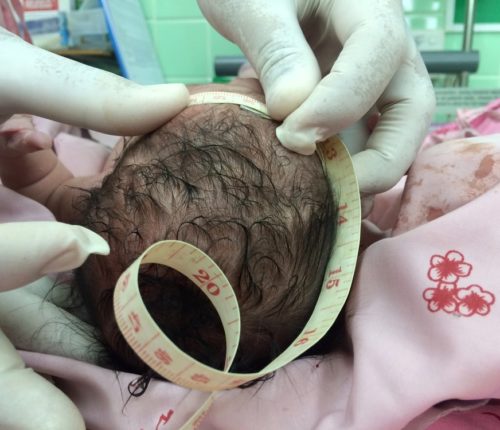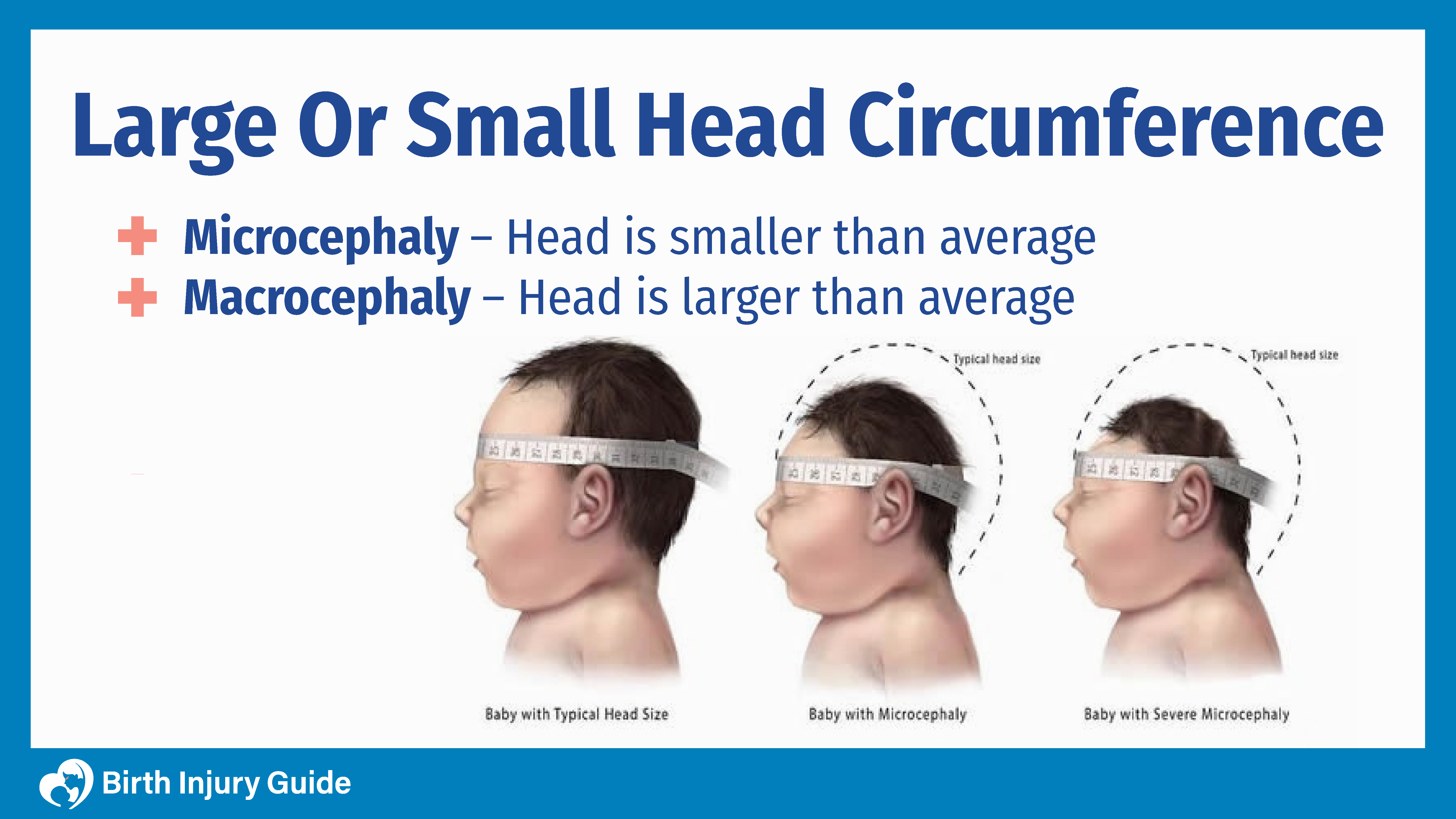
Large or Small Head Circumference
When you have a baby, you will notice that doctors measure his or her head circumference routinely – generally until they reach toddler age. Head circumference has always been an important part of documenting your child’s overall health. While small head circumference has always been linked to brain damage, new research is asking – “Can large head circumference predict brain damage or cerebral palsy?”
New research in the journal Obstetrics and Gynecology International is addressing this question with research on more than 4,700 infants. Read on to learn more about the research and why it is important for families impacted by birth injuries or cerebral palsy.
Information about Head Circumference
Head circumference is an important part of well-child care. Doctors begin measuring the infant’s head while he or she is still in the womb. Right after birth, head circumference is measured again, and can be an indicator of your child’s health. When measuring head circumference, doctors are looking for two possibilities – microcephaly or macrocephaly:

- Microcephaly – Microcephaly occurs when an infant’s head is smaller than expected as compared to infants of the same age and sex. Microcephaly often involves the infant’s brain being smaller than expected, which affects brain development. The brain may not develop properly, or may begin to develop and then stop during pregnancy.
- Macrocephaly – Macrocephaly occurs when an infant’s head is much larger than expected. The measurement of the head around the widest part must be larger than the 98th percentile. Macrocephaly can result from congenital factors, or from complications like hydrocephalus, intracranial bleeding, brain tumors or hematomas.
Research Suggests Head Circumference Can Predict Brain Damage, Cerebral Palsy
White matter is a part of the brain consisting of nerve fibers that link to the spinal cord. It is called white matter because of its pale appearance compared to other parts of the brain. It is well documented that damage to the white matter of the brain is a risk factor for cerebral palsy. This is primarily the case among infants born prematurely and who have small head circumferences.
New research, however, suggests a correlation between large head circumference and damage to the white matter. This correlation could help predict brain damage or cerebral palsy among infants born at or near term who otherwise appear healthy.
In one study, researchers reviewed 4,725 ultrasound screenings of term-born infants. These screenings were taken between day one and day 30. Using this information, researchers created a morphometric index (MMI), which measured length, weight and head circumference. The MMI measurement was found to be a solid predictor for risk of damage to the white matter as compared to other clinical indicators.
What Research Shows about Head Circumference
Of all the infants studied, 61 were found to have damage to the white matter. The only factor closely associated with damage to the white matter was head circumference. The findings were as follows:
- Infants with a head circumference placing them in less than the 10th percentile, or greater than the 75th percentile, were up to 10 times more likely to have brain damage.
- Infants in the 90th percentile or greater had 10 times or more the risk of brain damage to the white matter.
- Among infants in the highest risk, boys were far more likely to have brain damage than girls. Boys accounted for 74 percent of those studied.
- The primary risk among newborns with a large head circumference was prolonged or complicated delivery, which can result in brain deformations or damage.
- Among the newborns found to have brain damage, researchers noted the following:
- 38 percent were placed in intensive care with symptoms of asphyxia.
- 62 percent of infants with brain damage exhibit no clinical signs, and bypass routine diagnosis or treatment. This may account for so many unexplained cases of cerebral palsy or developmental delays in childhood.
There was no significant correlation between the MMI index and brain hemorrhages, premature breaking of the amniotic sac, intra-amniotic infection, bleeding during pregnancy or miscarriage.
What this Research Means for Babies and Families
Around 28,000 birth injuries occur in the U.S. each year – many of them include brain damage. Brain damage can range from mild with few symptoms, to severe causing lifelong disability. It is important for healthcare providers to understand the risks of brain damage and take appropriate action to prevent injuries from occurring.
One of the most promising elements of these research findings is the narrowing of infants who may be at risk for having damage to the white matter of the brain. Using the MMI index, healthcare providers can select infants born with a head circumference in less than the 10th percentile or greater than the 90th percentile for further imaging. Infants in these percentiles may not exhibit signs of brain damage, but may benefit from additional testing to be certain. There is no standard microcephaly life expectancy, but will depend on the nature and severity of the condition.
Early detection and intervention is one of the best ways to improve outcomes for infants with brain damage. This research offers hope and practical recommendations for healthcare providers. It may also help infants with brain damage get the diagnosis and treatment needed as soon as possible. Researchers recommend risk management strategies for infants with a large head circumference during sonograms or ultrasounds during pregnancy. This can help avoid prolonged or difficult labor.
Learn More about Infant Brain Damage
If your child has suffered brain damage during pregnancy or labor, your world may feel upside down. One of the best ways that you can advocate for your child is to learn as much as possible about brain damage and birth injuries. You may want to explore whether your child’s injury was due to congenital factors or was a result of medical negligence. You may also find it helpful to explore your options for financial and other support or assistance.

